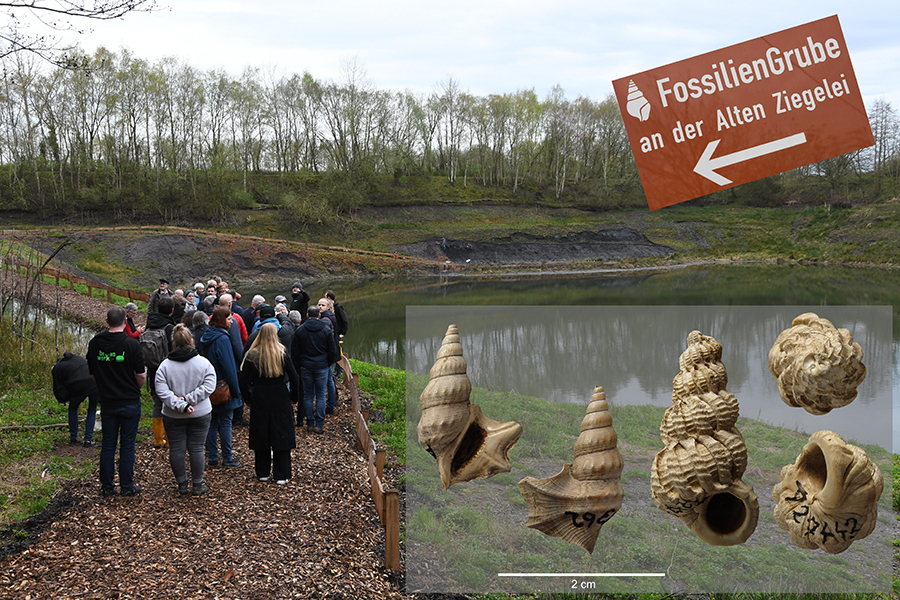Fachbereich nun für paläontologische Bodendenkmalpflege in Twistringen zuständig

Am 5 April wurde in Twistringen, 30 km südlich von Bremen, die „FossilienGrube“ eröffnet. Ab sofort können Besucher hier nach Schnecken, Muscheln und Haifischzähnen aus dem Miozän suchen. Bei der gut besuchten Eröffnungsveranstaltung wurde die Geowissenschaftliche Sammlung als verantwortlich für die paläontologische Bodendenkmalpflege vorgestellt, in Amtshilfe für das Geozentrum Hannover.
Besondere Funde werden auf ihre Bedeutung geprüft und gegebenenfalls als bewegliche Bodendenkmäler klassifiziert. In dem kleinen niedersächsischen Ort wurde bereits seit 1806 Ton aus dem Miozän abgebaut, 1992 war endgültig Schluss damit. Die Mitglieder des Bürger- und Heimatvereins Twistringen planten über einen längeren Zeitraum, auch mit tatkräftiger Unterstützung des Fachbereiches, und bereits seit 2007 gibt es vor Ort eine kleine Fossilienausstellung im Strohmuseum zu sehen. Im letzten Jahr konnte nun ein weiterer Schritt in Richtung Aufbereitung dieses geowissenschaftlichen Themas für die Öffentlichkeit erfolgen. Als Ergebnis wurde eine Sammelstelle an der „FossilienGrube“ genannten Lokalität eingerichtet. Aufgrund der Witterung konnte sie jedoch jetzt erst eröffnet werden. Sie beinhaltet die Befestigung der Wege in der ehemaligen Tongrube, eine exzellente Beschilderung mit vielen Erläuterungstafeln, eine Schutzhütte in der Grube, eine Möglichkeit Fossilien und Geräte zu waschen. Selbst ein kleines Schulungszentrum existiert bereits und an der weiteren Optimierung, auch für die Nutzung von Schulklassen, ist der Fachbereich eingebunden.
Ab sofort sind Fossiliensammler aufgerufen Funde die sich für etwas Außergewöhnliches halten der Geowissenschaftlichen Sammlung zu melden. Vor allem größere und zusammenhängende Funde, wie beispielsweise Walskelette, fallen unter die Regelungen der paläontologischen Denkmalpflege und würden dann von der Sammlung im Rahmen einer wissenschaftlichen Grabung geborgen werden.
Weitere Informationen:
Prof. Dr. Jens Lehmann

